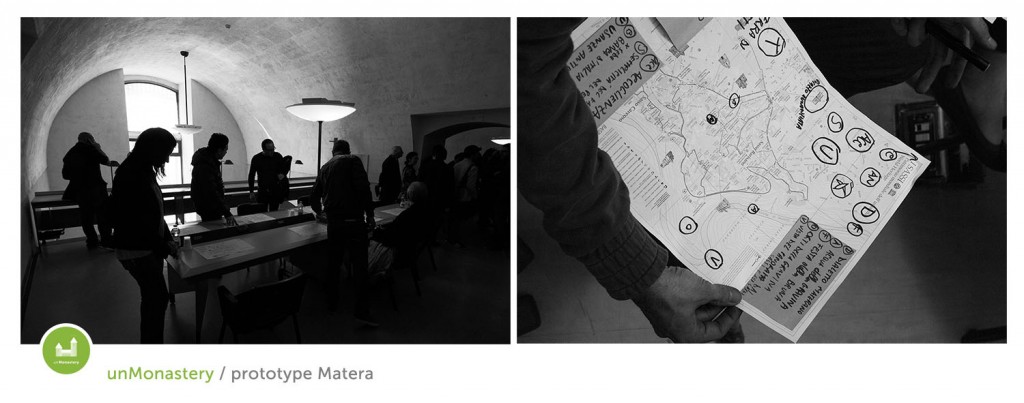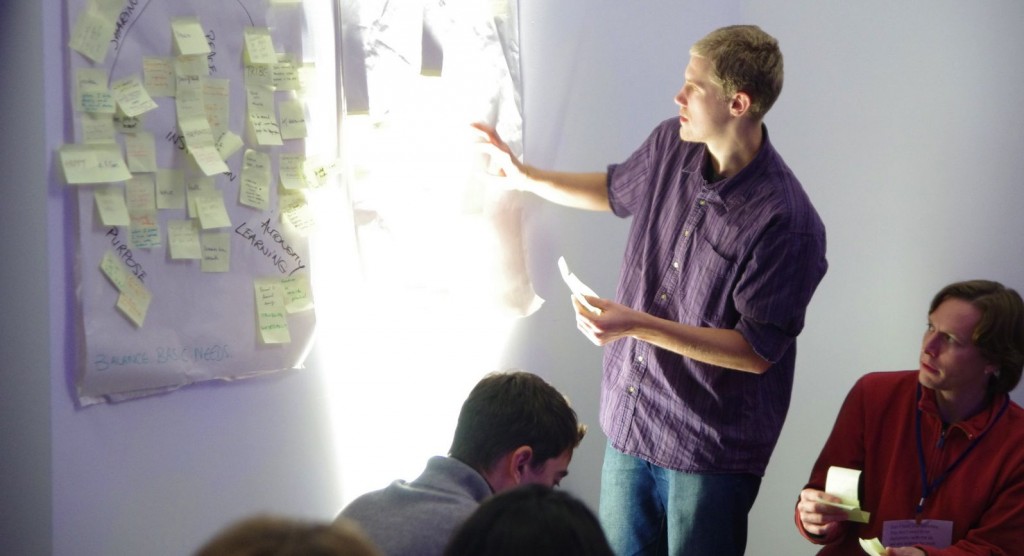Here’s three stories from my native country, Italy.
As with all cities, in Bologna the downsizing of the City’s staff and other, more contingent factors, have left a legacy of buildings that the city owns, but does not know how to use – nor, knowing it, would it have the manpower and money to do so). Recently the city produced a georeferenced list of such properties and released it in open format on the city’s open data website. This allows and encourages anyone to download the data, visualize them on a city map and dream up ways to use them better. The city has also activated a dedicate email address to collect suggestions that might come from citizens, business or other entities.
Another Italian city, Matera, has launched an international call for hackers and social innovators. The call makes a radical proposition: become “innovators-in-residence” for a period ranging from one to four months, living in town and interacting with the local community to cook up low- and no-cost hacks for a better city. Anyone can apply, with no limitations on qualifications, nationality or age. The resident hackers will live and work in the unMonastery, a new kind of living and working space that takes inspiration from 10th century monastic life. According to its founder Ben Vickers, the unMonastery’s goal is to “embed expert knowledge into a local community”.
In the very same week, online magazine CheFuturo launched a free map that gives its users access to 24,000 open hotspots scattered across the country. Thousands of citizen helped to build its dataset, simply by using a dedicated hashtag on Twitter and Facebook; validation, dataset cleanup and app development were contributed by the Chefuturo group, at no cost to the taxpayer. The dataset will be maintained by Wikitalia, a NGO for open government (disclaimer: I am a member of its board).
These three Italian stories developed indipendently one from the other. They happened in different places; are trying to solve different problems; their initiators (Bologna’s digital agenda alderman, Matteo Lepore; the director of the Matera 2019 committee, Paolo Verri; and CheFuturo’s editor-in-chief Riccardo Luna) did not coordinate. Yet, they share a common approach, a similar idea of how you get things done. More than that: they share a vision of how to live together in our cities. This: when faced with the most difficult challenges, the best card to play is the citizenry’s collective intelligence. Consequently, it is essential to give citizens information and power of initiative, so that such collective intelligence can be mobilized.
These are small-scale initiatives that – wisely – seek to squeeze tangible results from few or no resources. And yet, they contain a seed for the reversal of a thousands of years old idea of what it means “to govern”. From the hereditary bureaucracy of ancient Egypt’s scribes to the top-down “scientific” collectivization of farming in Stalin’s Soviet Union; and through Plato’s philosopher-kings ruled Republic and Imperial China’s invention of a meritocratica civil service, the art of governing has almost always been rooted in the idea that the governed are unable to make wise decisions. This tradition imagines good government as a far-sighted decision, made in the common interest by a carefully selected élite. Instead, Lepore and Verri decentralize: they don’t try to find solutions to their respective problems; they don’t even try to identify a priori people or organizations that could suggest such solutions (“let’s open up a forum with local business and the university”). They simply inform and enable citizens. Not just their own, either, but those of the whole planet. Why not? The Internet makes this last choice obvious and free. It is very possible for a Materan to come up with a good idea for one of the unused spaces in Bologna, or for a Ghanaian to suggest a useful and realistic project for Matera. It would be senseless to exclude potentially valuable input from the get go. On the other side of this game, you find citizens like Luna, who are able to turn generic aspirations (“we need channels to stay connected while mobile”) into specific actions (“let’s map open wi-fi hotspots! Once we aggregate them, we’ll have made visible a nationwide network that’s already there, only no one knows it”) – and to do so without waiting for anyone’s permission.
A few months ago, I asked myself what we mean by “smart” in smart cities. My answer was that there are two alternative answers. One considers that the smarts of a city is concentrated in its universities and in the R&D labs of its large, hi-tech companies, and gives citizens the role of consumers of the various gadgets that these invent. The other, on the contrary, maintains that the smarts of a city is distributed among all citizens, and works to create spaces for everyone’s creativity to find outlets. The first approach to smart cities produces electric cars, in response to questions like “how can we reduce emissions from cars in the city?”; the second one produces bicycle cooperatives and urban farming, in response to questions like “do we really need cars to get around?”. It seems clear to me that the initiatives of Bologna, Matera and CheFuturo subscribe to this second approach.
From what I have heard, Lepore, Verri and Luna have all read and thought through my post. But whether they did or not is irrelevant: the spirit of radical decentralization in the choices they made is great news for those that, like me, believe that any city’s best tool is promoting the creativity of its citizens. Just as countless smart cities-themed conferences discuss sensors, the Internet of things and large-scale investments to program, thousands of smart citizens get together, experiment, fail, make progress, often collaborating with their institutions. The ones have money and large organizations; the others have many people, and networks to connect them. It will be interesting, in the end, to see which side will have been the smarter.

